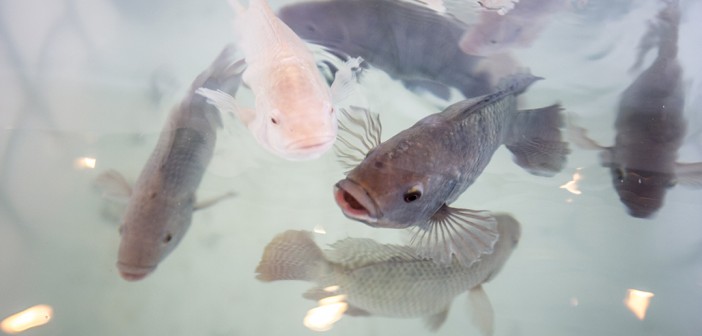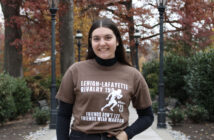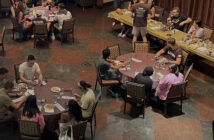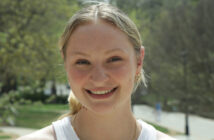Students doing research at Lehigh’s Mountaintop Campus this summer have received their project assignments for the university’s third summer of the Mountaintop program, a mixed-discipline research program in which students collaborate to lead their own projects with a faculty mentor.
In 1987, Bethlehem Steel sold five of their eight research buildings on South Mountain to Lehigh, providing 370,000 acres of floor space, and in May 2013, Lehigh gained two more buildings.
The Mountaintop Project officially began when Scott Belair, ’69, gave $20 million to jumpstart phase one in which students, with the autonomy and freedom to develop their own ideas, would be able to spend a summer collaborating in a small group to research and create.
“The biggest value of the Mountaintop program is how open and creative the projects are, how they really put the power and control in the hands of the students,” said Dr. Kelly Austin, who worked with students on Mountaintop the first two summers of the program.
She explained how students from different disciplines work on projects and each one becomes accountable, as they are considered the expert in their field on the topic. She also mentioned there there is a creative energy up on Mountaintop as students in different groups are side by side doing their respective work, encouraging and motivating each other.
Chester Toye, ’17, will be working on the “Integrated Activity Pods” project this summer, in which he and four other undergraduate students will be mentored by professors Berrisford Boothe and William Best.
The group will be studying the design of mobile structures or pods that would potentially be used for mobile research in a non-traditional classroom setting. The mobile pods would accommodate research that needs to be done in specific places and also encourage outside-of-the-box thinking. The students will be studying the design and usage of the pods among other logistics.
“I think it’s a great opportunity for students to explore and learn through doing,” Toye said. “I’m a pretty hands-on learner, rather than reading from a textbook and memorizing. I like collaborating with people and problem solving, and I don’t have time to do that as much during the year while taking six classes and having a busy schedule and listening to what a professor says.”
Toye talked about his excitement at the prospect of going from the research stage to actually creating something tangible by the end of the summer.
Misha Panzer, ’16, a product design major, will also be working on a project with two other undergraduate students on the use of LCD globe displays and their use in communication and studying of art and technology. The project is titled “A new portal: Connecting the world through an LCD globe.”
Emily Macmillan, ’16, a bioengineering major; Elena Ramirez, ’15, a bioengineering major; Jeff Peisner, ’15, a mechanical engineering major and Daniel Levy, ’16, a mechanical engineering major, will be working on a project that began in the summer of 2014 dealing with 3D printing of exoskeletons to aid in rehabilitation for patients with hand-muscle disorders. Other undergraduates will work on creating a portfolio of “creative arts learning activities” for use by students and teachers in public schools.
Other projects this summer include: “Adapting 3D Ocean Farming for Vulnerable Warm Water Coastlines (SDevLab),” “Low-energy Sustainable Farming,” “Biomanufacturing: A New Paradigm in Functional Material Synthesis for Sustainable Energy,” and “Rapid Development of a Chemical Analysis Tool with 3D Printing.” Most projects will be done by four or five students in a mixed array of relevant disciplines.
Professor Michael Kramp, who mentored a group of students in the summer of 2013, said that because the projects are paid, students are able to fully give their attention to their projects since they’re not concerned with making money outside of the program or worrying about normal classes.
Oliver Rye, ’17, who is working with Toye on the Integrated Activity Pods project, mentioned that one reason for getting involved was finding a job on campus for the summer. Rye anticipates his role as a mechanical engineer in the group will be designing and building components for the project.
On the value of the mountaintop project, Kramp says he’s not sure we know just yet, and that it’s exciting to see where the projects will take Lehigh and it’s students. Funding comes from donors and the Belair donation, but Austin said that the Research Office manages funding for the Mountaintop Projects to make sure it is a sustainable initiative that Lehigh plans to continue with well into the future.






Comment policy
Comments posted to The Brown and White website are reviewed by a moderator before being approved. Incendiary speech or harassing language, including comments targeted at individuals, may be deemed unacceptable and not published. Spam and other soliciting will also be declined.
The Brown and White also reserves the right to not publish entirely anonymous comments.